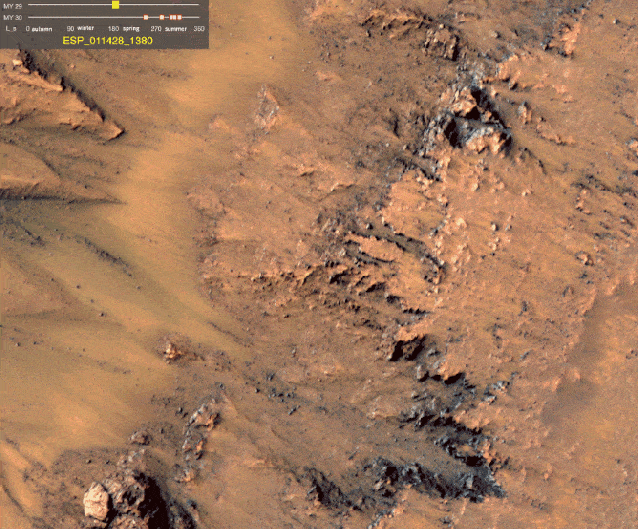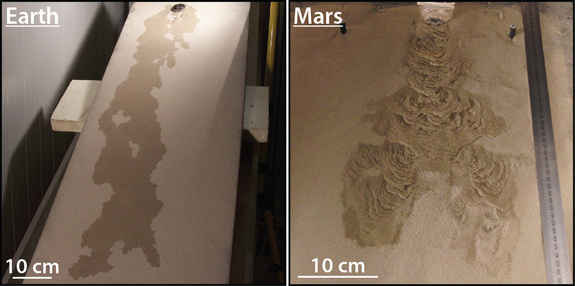In the span of 24 months, scientists have gone from “there might be some water” to “there definitely is flowing water” on the surface of Mars. In 2015, NASA scientists found that seasonal dark streaks which appear like spots on the slopes of mountain ridges are actually hydrated salts (water and salt). Now, they report something you’d never expect to happen in a place with average temperatures of -67 degrees Fahrenheit — this flowing water is actually boiling!

We know for sure Mars once hosted a lot of water: oceans and flowing rivers. Today, however, Mars is a desolate wasteland virtually devoid of an atmosphere (it’s only 1% as thick as that on Earth), fully exposed to radiation and chilling temperatures as low as -207 degrees Fahrenheit.
Labeling the Red Planet as completely barren is unfair, though. Researchers got their first hints in 2011, when the Mars Reconnaissance Orbiter (MRO) spacecraft observed dark streaks a few metres wide that popped up and widened during the warm season, only to shrink in cooler seasons. The leading hypothesis was that these streaks were left by flowing water, which obviously got everyone involved very excited.

Spectral analysis made by orbiting satellites showed that inside these streaks there were hydrated salts. The findings were very unambiguous, but seemed to open more questions than it answers. On Mars, the atmospheric pressure is 100 to 200 times smaller than on Earth, so those hydrated salts should have disintegrated faster.
If you remember your physics 101, water will boil at different temperatures according to pressure. If you want to make a soup up in the Himalayan mountains where the altitude is very elevated, hence low pressure, the water will start boiling faster.
A group of French researchers from University of Nantes decided to explore this mystery by building a “Mars chamber”. Inside this experimental setup, the researchers mimicked the atmospheric conditions found on Mars. When a block of ice was placed on a sand-covered slope, it started melting. When “Earth conditions” were set to “on”, the now liquid water started to flow down the sand in a familiar fashion. In the Mars-like environment, though, the water started to boil and carved channels inside the sand.
Essentially, the boiling water blasted the sand and carved deep into the sand. It’s not perfectly accurate since the gravity was Earth-like for both conditions, but we now have an idea of what’s going on Mars where something very similar must be happening.
The findings published in Nature Geoscience bear important consequences for the prospect of finding life on Mars. Initially, everyone got excited by the Martian dark streaks because these meant that flowing water is a regular occurance, hence life might just find the right conditions inside the right cracks to survive. Now, the French researchers say that these streaks are formed by boiling water, meaning the water stays in liquid form for not too long. It’s not over until the fat lady sings, though. Mars is still full of surprises.






